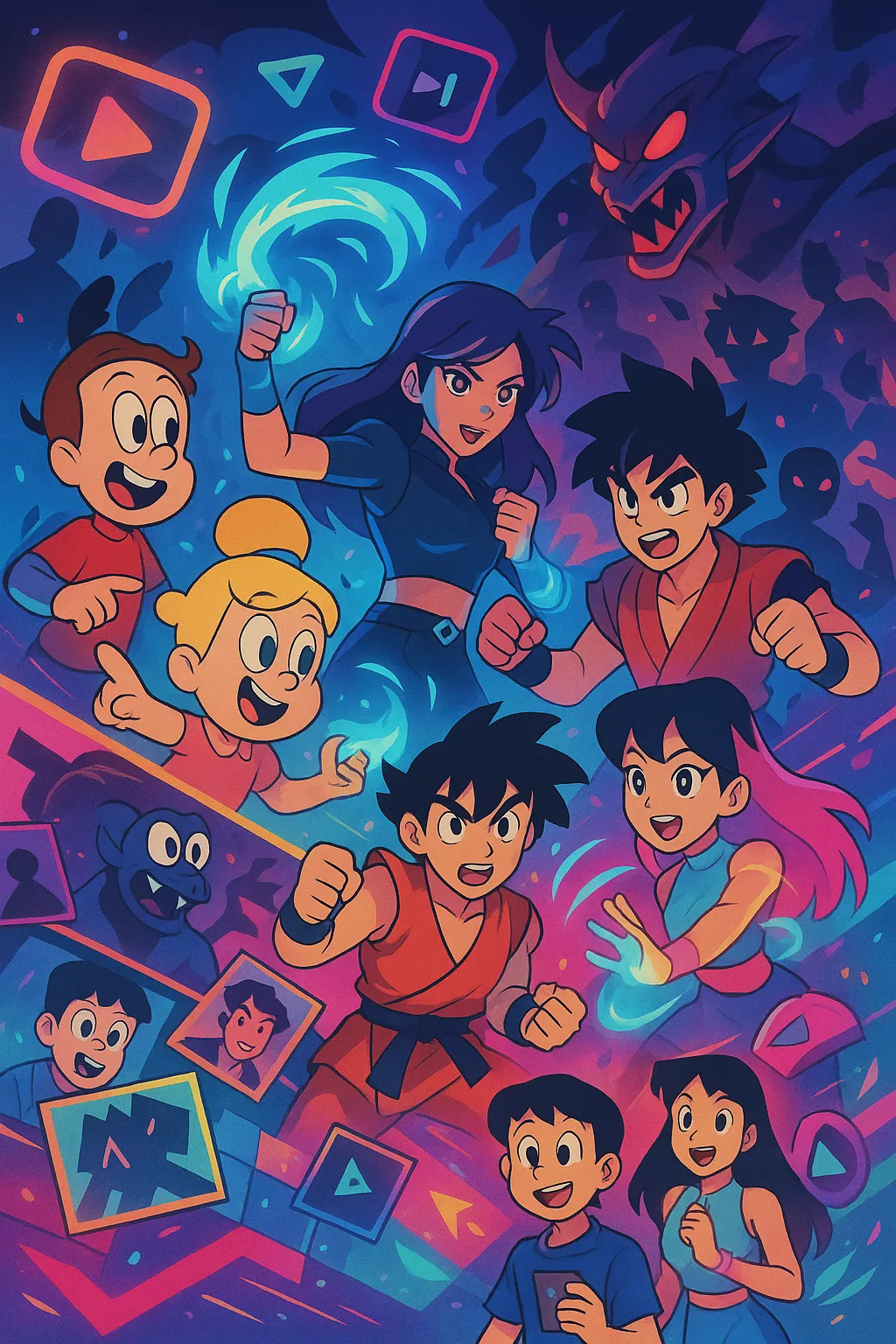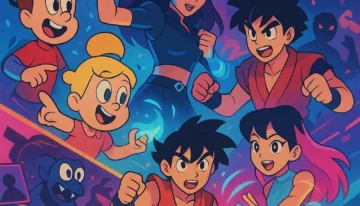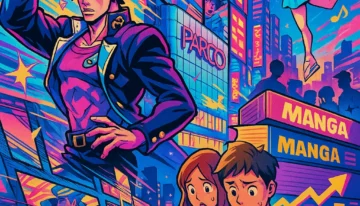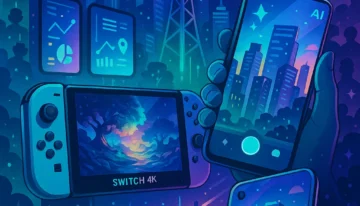East Meets West: How Animation Boundaries Are Dissolving in 2025
From K-pop demon hunters to Devil May Cry adaptations, the line between Eastern and Western animation has never been more beautifully blurred
June 24, 2025 – Animation Correspondent
The animation world of 2025 looks nothing like it did a decade ago. Where once clear lines existed between “Western cartoons” and “anime,” we now live in a universe where American studios produce K-pop demon hunter series, Korean studios animate American video games, and classic Japanese manga gets Hollywood-budget remakes. Welcome to the post-genre animation era.
The Influence Revolution
A new analysis has confirmed what animation fans have suspected for years: Japanese anime hasn’t just influenced Western animation—it’s fundamentally rewired its DNA. From the fluid character designs of Avatar: The Last Airbender to the serialized storytelling of Teen Titans to the hybrid aesthetic of RWBY, Western creators have been quietly revolutionizing their medium by borrowing the best elements from anime.
“It’s not imitation anymore,” explains Sarah Kim, an animation historian at CalArts. “It’s synthesis. Western creators aren’t trying to make anime—they’re using anime techniques to tell distinctly Western stories.”
The result is a generation of animated content that defies easy categorization. Shows that look like anime but sound distinctly American. Series that borrow Japanese visual language but tackle uniquely Western themes. It’s cultural fusion at its most creative.
K-Pop Meets Monster Hunting
Perhaps no project embodies this fusion better than Sony Pictures Animation’s KPop Demon Hunters, which hit Netflix on June 20th to surprisingly positive reviews. On paper, it sounds like a committee-designed mess: an American animated musical fantasy comedy about a K-pop girl group that fights demons. In practice, it’s exactly the kind of boundary-pushing content that modern animation does best.
The series succeeds because it doesn’t try to be authentically Korean or authentically American—it creates its own hybrid identity. The musical numbers have the polish of Disney with the energy of K-pop choreography. The demon-hunting sequences borrow from both American superhero traditions and Japanese magical girl conventions. The result feels fresh precisely because it refuses to stay in any single cultural lane.
“We stopped asking ‘Is this appropriate?’ and started asking ‘Is this fun?'” says series creator Maria Rodriguez. “Once we gave ourselves permission to mix everything together, the show found its voice.”
Video Games Get the Premium Treatment
Netflix’s Devil May Cry series, animated by the Korean powerhouse Studio Mir and premiering April 3rd, represents another evolution in how animation crosses borders. A Japanese video game franchise, animated by a Korean studio, for an American streaming platform—and somehow, it works beautifully.
Studio Mir, known for their work on The Legend of Korra and Voltron, brings their signature kinetic energy to Dante’s demon-slaying adventures. The action sequences feel both faithful to the games and uniquely suited to animation, with camera movements and visual effects that would be impossible in live-action.
The critical acclaim and renewal for a second season prove that audiences are hungry for animation that treats video game adaptations seriously. Gone are the days when game-to-screen meant cheap cash grabs. This is prestige television that happens to be animated.
The Remix Culture
The Dandadan compilation film Dan Da Dan: Evil Eye exemplifies how the animation industry is experimenting with new release formats. By taking three episodes from the upcoming second season and presenting them as a theatrical experience, distributors are finding ways to give fans premium experiences while testing new business models.
The simultaneous release across Asia, Europe, and North America on June 6-7 also shows how global the animation market has become. There’s no longer a “domestic market” and “international sales”—everything is designed for worldwide consumption from day one.
Nostalgia Gets a Makeover
MAPPA’s Ranma ½ remake might be the most interesting experiment of all. Taking a beloved 1980s manga and giving it the full modern animation treatment—with Season 2 launching this October—requires walking a tightrope between honoring the original and making it relevant for contemporary audiences.
Early reactions suggest MAPPA has found the sweet spot: keeping the chaotic gender-swapping comedy that made the original beloved while updating the animation style for modern viewing habits. It’s nostalgia that feels fresh rather than dated.
“The challenge wasn’t making it look modern,” explains MAPPA director Kenji Yamamoto. “It was making it feel as subversive today as it did in the 1980s.”
The Streaming Wars Fuel Innovation
Netflix’s aggressive investment in animation—from KPop Demon Hunters to Devil May Cry—reflects how streaming platforms are using animation to differentiate themselves. Animation can be more cost-effective than live-action while offering unlimited creative possibilities. More importantly, animated content travels across cultural boundaries more easily than live-action shows.
The success of these boundary-crossing projects is encouraging other platforms to take risks. Disney+ is developing anime-influenced content, HBO Max is investing in Korean animation partnerships, and Amazon Prime is funding everything from American-made anime to anime-influenced Western series.
Breaking Down Barriers
What’s most exciting about this moment isn’t just the quality of individual projects—it’s what they represent. We’re witnessing the breakdown of artificial barriers that have long constrained creative expression. Animation is no longer defined by where it’s made or what cultural traditions it follows.
Instead, creators are free to pull from the entire global toolkit of visual storytelling. Japanese pacing with American humor. Korean action choreography with European character design. The result is animation that feels both familiar and completely new.
The Future of Everything
As we look toward the rest of 2025 and beyond, the trends are clear: more fusion, more experimentation, more willingness to ignore traditional categories. Animation studios are becoming truly international, with teams spanning multiple countries and projects that defy easy classification.
The audience is there for it. KPop Demon Hunters proved that viewers will embrace weird hybrid concepts if they’re executed well. Devil May Cry showed that video game adaptations can be prestigious television. The Ranma ½ remake demonstrates that classic properties can be successfully updated for modern audiences.
We’re entering an era where the most interesting question isn’t “What country is this animation from?” but “What story is it trying to tell?” And judging by the quality of recent releases, that’s exactly the question creators should be asking.
The animation revolution isn’t coming—it’s already here, streaming directly to your device in dubbed, subtitled, and hybrid formats that would have been impossible to imagine just a few years ago. The only question is: are you ready to watch the future unfold?










